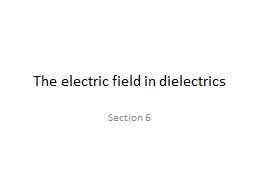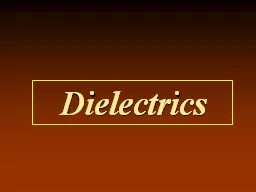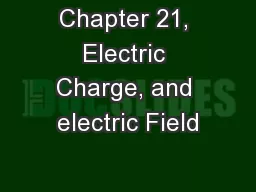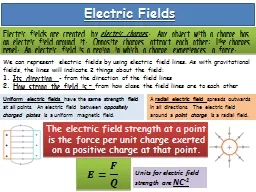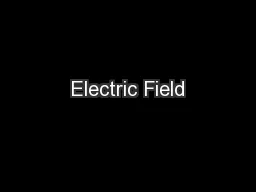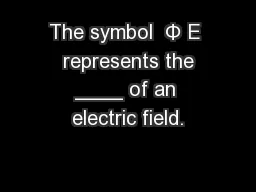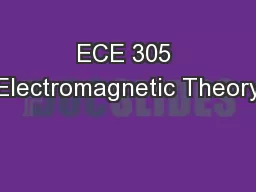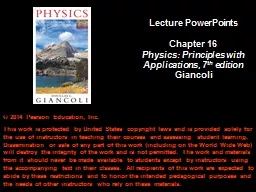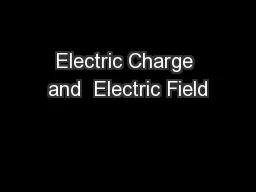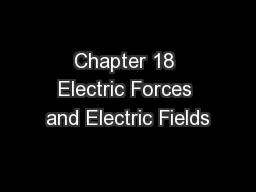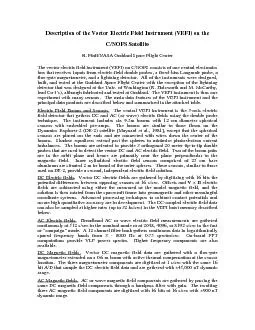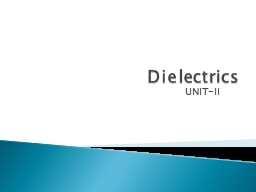PPT-The electric field in dielectrics
Author : stefany-barnette | Published Date : 2018-11-21
Section 6 Dielectrics C onstant currents are impossible Constant internal electric fields are possible No macroscopic currents Macroscopic field Might be locally
Presentation Embed Code
Download Presentation
Download Presentation The PPT/PDF document "The electric field in dielectrics" is the property of its rightful owner. Permission is granted to download and print the materials on this website for personal, non-commercial use only, and to display it on your personal computer provided you do not modify the materials and that you retain all copyright notices contained in the materials. By downloading content from our website, you accept the terms of this agreement.
The electric field in dielectrics: Transcript
Download Rules Of Document
"The electric field in dielectrics"The content belongs to its owner. You may download and print it for personal use, without modification, and keep all copyright notices. By downloading, you agree to these terms.
Related Documents

